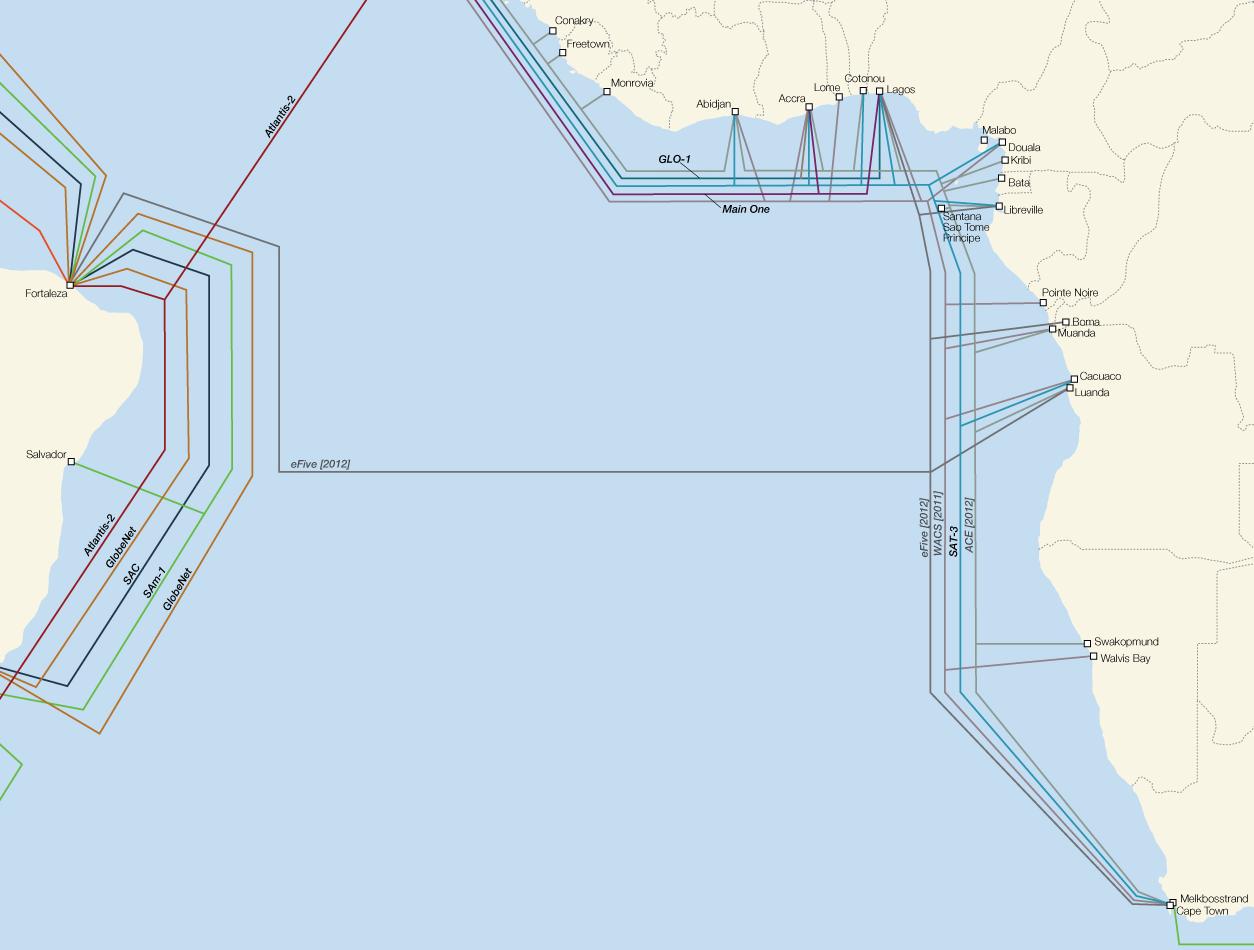Brazil and Africa join forces
At a distance of 1,600 mi (2,575 km), Africa and South America are relatively close trans-Atlantic neighbors. In fact, the distance from SW Senegal to NE Brazil is less than half the distance between London and New York. Based on this knowledge, it makes perfect sense to connect the two land masses and potentially decrease latency when Africans access American servers (and vice-versa).

A visualization of the undersea cables located near Brazil and the western coast of Africa. Click to enlarge. {TeleGeography Submarine Cable Map 2011}
Surprisingly, as of mid-2011, only a single undersea fibre-optic cable connects the two continents. Atlantis-2, activated in 1999, has landing points in Argentina, Brazil, Cape Verde, Senegal, Spain, and Portugal. In the meantime, the 20 Gbit/s capacity provided by Atlantis-2 has been substantial. More crucially, the right investors and business partners have not fallen into place – until recently.
Planned for mid-2013 is the SAex cable which will connect Fortaleza to South Africa. A second “trunk” will run from South Africa to Nigeria with landing points in Gabon, DRC, and Angola. When complete, the new cable will provide the shortest route to the USA, thus reducing network latency. Until now, most SA Internet traffic has been routed via Europe, and then across the North Atlantic to New York. A South Africa-Brazil-New York route would save a couple thousand miles and a few milliseconds per data request.
Capacity is key. The new SAex line will muster 12.8 Tbit/s – 800 times the capacity of the current Brazil-Africa connection.
Also worth watching is India. Currently, India and Africa are directly connected by SEACOM and SAFE cables. However, additional capacity will soon be needed along the southern and eastern coasts. Given the proper investment channels, another Africa-India connection could make perfect sense.












 Twitter
Twitter Facebook
Facebook Pinterest
Pinterest